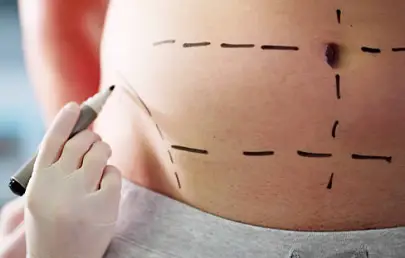Why Do Surgeons Draw on You Before Cosmetic Surgery?

Why Do Surgeons Draw on You Before Cosmetic Surgery?
If you’ve ever seen pre-surgery photos or are preparing for a procedure yourself you’ve likely noticed lines, arrows, and markings drawn on the face or body. While they may look unusual, these drawings serve a vital purpose in cosmetic surgery.
But why all the markings? Here's why your surgeon reaches for a marker before the scalpel.
1. Precision and Planning
Everybody is unique. While imaging and measurements help plan the procedure, nothing replaces the surgeon's in-person assessment. Drawing directly on the skin allows them to map out exact incision points, areas of fat removal or enhancement, and zones of symmetry or asymmetry. These markings act like a surgical GPS, guiding the surgeon through the procedure and ensuring they stay on course.
2. Symmetry and Proportion
In aesthetic surgery, balance and proportion are everything. Marking both sides of the body or face lets the surgeon evaluate symmetry while the patient is upright and relaxed—something that can’t be fully appreciated once the patient is lying down under anesthesia. This is especially important in procedures like breast augmentation, rhinoplasty, or facial contouring, where even subtle differences can impact the final result.
3. Communication With the Surgical Team
The markings serve as a visual language for the entire surgical team. Everyone in the operating room knows what areas are being targeted, where incisions are planned, and what the overall game plan is. This keeps the entire team aligned and reduces room for error.
4. Accounting for Gravity
Your body looks different when you're standing versus lying flat. For example, the natural droop of skin or tissue might not be as apparent when you’re lying down. Surgeons often make markings while you're upright to capture how gravity affects the body in real life. This allows for more natural-looking outcomes post-op.
5. Customizing Your Procedure
No two patients are the same, and neither are their procedures. The markings are personalized based on your body type, goals, and anatomy. They may reflect discussions from your consultation—such as areas you want to slim down or enhance—so your procedure is tailored just for you.
6. An Artistic Guide
Cosmetic surgery is part science, part artistry. The markings allow surgeons to sculpt the body or face much like an artist works with a canvas. It helps maintain artistic flow and ensures that proportions and shapes stay in harmony throughout the procedure.
7. Pre-Surgical Checks and Final Adjustments
Sometimes, those last-minute drawings allow the surgeon to make small tweaks to the original plan based on how your body presents on the day of surgery. Maybe there’s a slight swelling or shift from your pre-op consultation. The markings provide one last opportunity to refine the plan.
Although it might look like simple marker lines, the pre-surgery drawings are an essential part of delivering safe, successful, and beautiful results. They combine anatomy, artistry, planning, and precision all personalized to your body and your goals.
So, the next time you see someone marked up before surgery (or find yourself in that position), know this: those lines aren’t just for show. They’re a visual blueprint for transformation.


